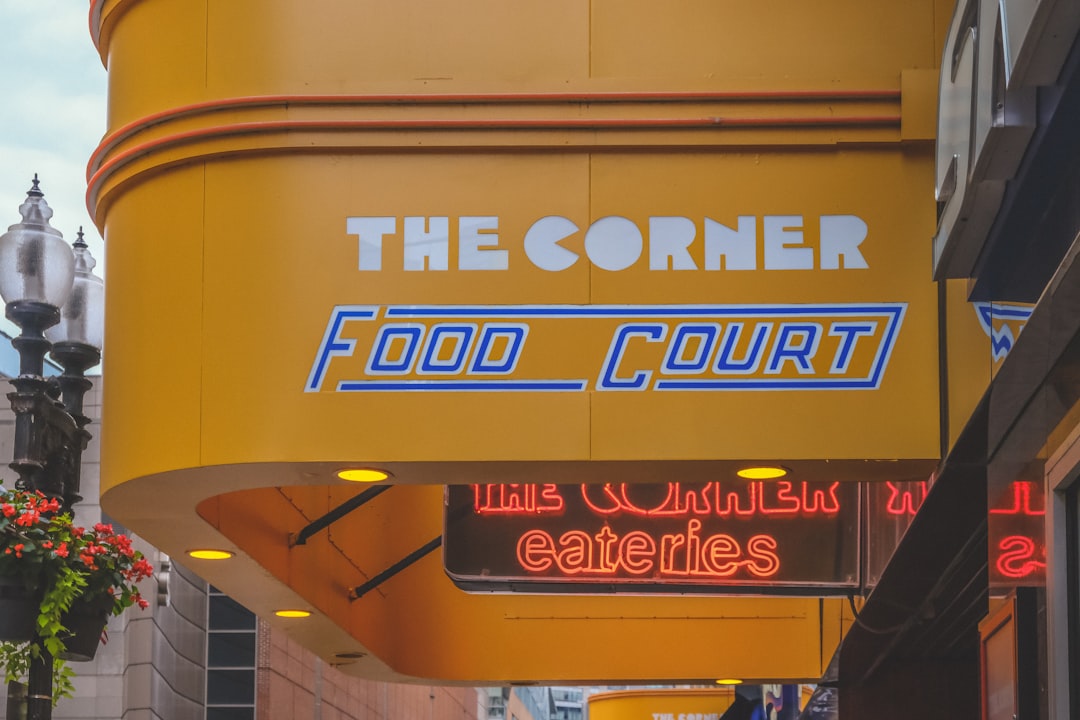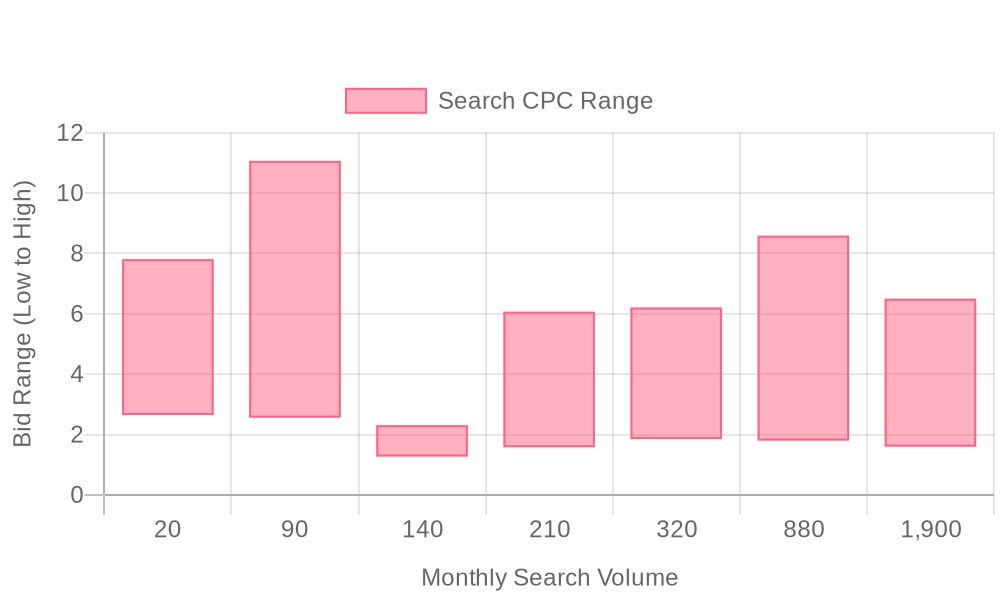
Supercharge your lead generation with a FREE Google Ads audit - no strings attached! See how you can generate more and higher quality leads
Get My Free Google Ads AuditFree consultation

No commitment
Supercharge your lead generation with a FREE LinkedIn Ads audit - no strings attached! See how you can generate more and higher quality leads
Get My Free Google Ads AuditFree consultation

No commitment
Supercharge your lead generation with a FREE Meta Ads audit - no strings attached! See how you can generate more and higher quality leads
Get My Free Google Ads AuditGet My Free LinkedIn Ads AuditGet My Free Meta Ads AuditFree consultation

No commitment
Supercharge your lead generation with a FREE Google Ads audit - no strings attached! See how you can generate more and higher quality leads
Get My Free Google Ads AuditFree consultation

No commitment
In the highly competitive food brokerage market, generating and converting leads effectively are at the forefront of strategy development. In this context, missing high-value prospects or capturing lead information too late can hinder growth. Google Ads emerges as a key tool in this endeavor, capturing the attention of decision-makers precisely when they're in search of solutions. For many brokers, generic website analytics fall short, but technology now provides granular insights to align ad spend with real interests, thus bridging the gap between digital and traditional marketing efforts. Whether following up on in-person engagements or enhancing brand presence, Google Ads offers precision targeting and ROI measurement that are crucial for food broker marketing. This guide delves into specialized strategies to optimize Google Ads specifically for food brokers, ensuring maximum impact and reach.

Modern food brokers face a high-stakes environment where every missed lead can result in lost accounts and diminished territory presence. With Google Ads, brokers can intercept high-intent buyers at the earliest stage, leveraging search intent to drive immediate outreach and secure valuable partnerships ahead of competitors.
Success in food broker lead generation depends on a tightly integrated, data-driven approach that connects paid search with the broader revenue pipeline. Marketers who unify audience insights, track real-time intent, and sync CRM data into their Google Ads workflow consistently outperform those relying on legacy, manual processes. This strategy ensures that no promising buyer slips through due to disconnected systems or delayed response.
By applying these data-driven Google Ads strategies, food brokers can strengthen their online presence, capture high-quality buyer leads, and drive measurable growth in both manufacturer and retailer relationships. To streamline your approach, get started for free with Sona and experience a unified, intent-driven pipeline from day one.

Food brokers operate in a sector where every buyer interaction can influence multimillion-dollar decisions and supply chain stability. Leveraging Google Ads allows brokers to bypass generic outreach and directly connect with procurement directors, category managers, and food service buyers in the exact moments they are searching for new suppliers or product lines. For a step-by-step guide on setting up and optimizing campaigns to boost visibility and sales, explore this Google Ads for food businesses resource.
Ready to see how smarter targeting and analytics can transform your food brokerage marketing? Get started for free with Sona.

Food brokers operate in a fast-moving, highly competitive environment where each buyer interaction has outsized revenue potential. Maximizing the impact of digital marketing for food brokers requires a sophisticated approach to campaign selection and execution, ensuring every stage of the B2B funnel is supported. Modern food broker teams leverage Google Ads to create a connected experience across channels, uniting touchpoints that drive qualified interest and meaningful engagement. For a step-by-step look at setting up and optimizing Google Ads specifically for food businesses, refer to this Google Ads for food businesses guide. Teams seeking to identify and engage actual companies showing buying intent can also leverage Sona to reveal in-market accounts and trigger better follow-up.
Ready to maximize your digital marketing impact? Get started for free with Sona.

Growth in food broker marketing often stalls when outreach strategies fail to address channel gaps and audience blind spots. Expanding beyond familiar platforms and tactics unlocks higher-value leads and more reliable conversions, especially as food industry advertising becomes increasingly data-driven. For actionable insights on setting up and optimizing your campaigns, explore this step-by-step guide to Google Ads for food businesses.
By using advanced identification and intent data, food brokers can refine Google Ads targeting for food, shifting spend to high-converting accounts and tracking engagement across the sales funnel. CRM and ad platform integrations further unify online and offline activity, ensuring every qualified buyer receives timely, personalized outreach that accelerates revenue growth. To experience these capabilities firsthand, get started for free with Sona.
Food brokers operate in a complex ecosystem where buyers range from large grocery chains to independent restaurants. Effective audience segmentation lets you tailor messaging, maximize budget efficiency, and accelerate lead generation by aligning campaigns to specific customer profiles within the food industry. Learn how to leverage audience segmentation in foodservice marketing for more strategic results, or explore our blog for actionable marketing analytics insights.
Ready to put advanced segmentation into action? Get started for free with Sona.

| Industry | Keyword | Monthly Search Volume | Competition Level | Low Bid | High Bid |
| Food Brokers | food ingredient brokers | 20 | MEDIUM | 2.65 | 7.81 |
| Food Brokers | beverage brokers | 90 | LOW | 2.56 | 11.07 |
| Food Brokers | produce brokers near me | 140 | LOW | 1.27 | 2.31 |
| Food Brokers | food broker companies | 210 | LOW | 1.58 | 6.07 |
| Food Brokers | food brokers near me | 320 | LOW | 1.85 | 6.21 |
| Food Brokers | food service brokers | 880 | LOW | 1.8 | 8.59 |
| Food Brokers | food brokers | 1900 | LOW | 1.6 | 6.5 |
Effective keyword strategy is foundational for any Google Ads initiative within the food brokerage sector. By aligning high-intent search terms with specific buyer stages and geographic regions, food brokers ensure campaign budgets are allocated to prospects actively seeking distribution solutions, supplier partnerships, or category expertise. For more on optimizing keyword and campaign alignment, explore this step-by-step guide to Google Ads for food businesses. This approach prevents wasted spend on generic queries and drives higher lead quality by reaching procurement managers, retail buyers, and decision-makers at the most opportune moments.
A strategic mix of broad and long-tail keywords can capture both volume and specificity. High-conversion terms such as "food broker services in Chicago," "wholesale food distributor partnerships," "private label food broker New York," and "restaurant supply sourcing" map directly to different buyer needs and local markets. Incorporating phrases related to product categories—like "organic food brokerage," "seafood distributor for restaurants," or "specialty grocery food broker"—enables more granular targeting, supporting food broker lead generation and maximizing the relevance of ad placements. Discover additional B2B marketing reports for your CMO dashboard to inform your keyword planning and performance tracking.
Precision targeting within Google Ads for food brokers is strengthened when keyword lists are continuously refined using real-time audience data and CRM integration. As prospects move from research to contract negotiation, dynamic audience segmentation allows marketers to shift budget toward accounts demonstrating in-market behaviors. With Sona, audience lists and keyword priorities update automatically as contacts progress through the funnel, ensuring ads serve only to the most engaged and sales-ready companies. For a seamless start to dynamic segmentation and automated keyword updates, get started for free with Sona to align your ad strategy with the most actionable data in the food brokerage sector.
Food brokers require keyword targeting as granular as their buyer segments. Aligning keyword lists with service specializations—such as imports, organic products, or regional exclusives—ensures campaigns engage the most relevant prospects. Using local modifiers and long-tail phrases lets brokers zero in on procurement managers or buyers searching for niche solutions, reducing wasted spend and boosting engagement rates. For a step-by-step guide to setting up and optimizing Google Ads campaigns for food businesses, visit how to setup an effective campaign.
Negative keywords are essential for filtering out unqualified leads, such as retail shoppers or unrelated industries. By applying these filters, food brokers prevent their budgets from being diluted by irrelevant clicks and focus only on accounts with high purchase intent. Sona’s identification further sharpens this approach by matching anonymous searchers to their company profiles, allowing for real-time adjustments to keyword targeting and budget allocation based on in-market buyer signals.
Effective ad copy for food broker campaigns must address industry pain points directly in the headline: late lead discovery, fragmented supply chains, or inconsistent contract fulfillment. Messaging that positions solutions—such as expedited onboarding or data-backed product matching—resonates with decision-makers who value efficiency. To explore industry best practices for ad messaging, see Google Ads strategies for restaurants.
Offering clear incentives, such as “free consultations” or “custom distribution audits,” encourages prospects to take immediate action and book meetings. Seamlessly integrating Sona’s intent signals means ad copy can be dynamically adjusted to reflect the latest buyer behavior, ensuring that messaging stays aligned with the most compelling pain points for each audience segment.
Landing pages should deliver a seamless experience from ad click to conversion, echoing the language and priorities established in the keyword and ad copy phases. Maintaining this continuity reduces drop-off caused by disconnected signals and instills trust in the prospect’s journey. For insights on leveraging Google Ads to enhance foodservice marketing and attract more customers, review foodservice marketing with Google Ads.
With Sona’s destinations syncing enriched audience data and behavioral triggers to landing page experiences, food brokers can personalize content blocks or offers based on the visitor’s company, segment, or historical engagement. This approach drives higher-quality leads, as buyers are more likely to submit forms or request consultations when they see information tailored to their specific procurement objectives.
Optimizing Google Ads for food brokers requires ongoing measurement and automated refinement. Conversion actions—such as demo requests, RFP downloads, or qualified calls—should be tracked using smart bidding strategies that prioritize high-intent interactions. For practical tips on running successful Google Ads campaigns for grocery and food-related businesses, explore Google Ads for grocery stores.
Importing offline conversions, such as signed contracts or product sample requests, closes the loop on performance and ensures that ad spend is tied to real business outcomes. Sona’s ad conversions unifies these online and offline signals, enabling brokers to accurately measure campaign ROI and redirect spend toward the channels and audiences delivering the highest-value deals. This iterative optimization process ensures that every dollar invested is working to drive measurable growth for food broker marketing objectives. If you're ready to see how this approach can fit your workflow, get started for free with Sona.

Food brokers who want to grow their digital footprint must prioritize targeted, data-driven engagement across every stage of the buyer journey. Effective online marketing for food businesses hinges on reaching both established partners and untapped prospects with messaging tailored by need, timing, and business segment. Explore proven Google Ads strategies for food businesses to boost visibility and drive sales, while leveraging marketing analytics insights to refine your outreach.
Use retargeting across multiple channels to reinforce educational content and accelerate conversion for prospects identified as slow-moving or hesitant. By tracking cross-platform engagement and intent signals, teams can prioritize follow-up for buyers who show recurring interest but have yet to act. Platforms that detect returning visitors and map engagement history allow food brokers to proactively identify companies showing increased research behavior. This granular insight enables teams to nurture high-potential opportunities and reduce lead drop-off rates.
Create upsell opportunities by segmenting audiences according to buying signals and sales readiness. When enriched data shows a lead advancing from initial inquiry to price requests or repeat site visits, marketers can trigger tailored offers or cross-sell related products with precise timing. Real-time audience updates ensure that food brokers always engage the right accounts with relevant messaging, maximizing the chance of expanding existing business relationships.
Leverage industry partnerships for co-branded initiatives where unified intent data delivers higher engagement and mutual value. By collaborating with manufacturers, distributors, or technology providers, brokers can tap into shared pools of in-market buyers. Coordinated campaigns built on shared audience insights yield stronger click-through rates and more efficient lead capture, amplifying the impact of each partner’s marketing investment.
Adapt digital strategies based on granular state or metropolitan data to synchronize communication across every touchpoint. Regional market trends, local regulations, and buyer preferences can shift rapidly in the food industry. Feeding this localized intelligence into campaign setup and budget allocation ensures every message resonates with its target audience, increasing both response rates and ROI. When all touchpoints update automatically as leads move through the funnel, brokers can maintain consistent, relevant engagement from first impression through final sale.
Mastering Google Ads for Food Brokers requires more than campaign launch; it is a continuous cycle of refinement. Integrating advanced conversion data and intent signals with broader marketing efforts eliminates guesswork and ensures every campaign is accountable to measurable business outcomes. To put these strategies into action, get started for free with Sona and unlock new opportunities to generate high-quality leads and drive sustained business development.
In conclusion, leveraging Google Ads effectively as a food broker can significantly enhance your visibility and drive sales in a competitive market. By focusing on precise targeting, engaging ad creatives, and strategic optimization, you can connect with the right audience at the right time, ensuring your products reach those who need them most.
Throughout this article, we've explored the unique challenges faced by food brokers in the digital advertising space, such as targeting specific demographics and optimizing campaigns for maximum ROI. By implementing the strategies discussed, you can overcome these hurdles and harness the power of Google Ads to propel your business forward.
Imagine the possibilities when you have a streamlined approach to your advertising efforts, leading to increased brand awareness and revenue growth. Embrace the opportunity to transform your ad campaigns and watch your business thrive in the digital landscape.
We invite you to start for free to experience the capabilities that can unify your go-to-market data and drive actionable insights, bringing your advertising strategies to new heights.
Best practices include integrating campaign data with CRM systems, using precision targeting to reach procurement managers and retail buyers, aligning ad messaging with landing pages, continuously improving through data analysis, and ensuring cross-channel marketing operations.
Food brokers can target their audience by focusing on specialized keyword clusters, using in-market signals and firmographic data, and dynamically updating audiences based on the procurement cycle.
The budget allocation should focus on high-value prospects and minimize wasted spend by targeting only those actively searching for solutions, and adjusting budgets based on performance analytics to ensure efficient spending.
Food brokers should focus on industry-specific search terms like 'wholesale snack distribution' or 'private label food broker,' and use a strategic mix of broad and long-tail keywords to capture both volume and specificity.
Success can be measured by tracking conversion paths, integrating ad data with CRM systems to map digital interactions to sales outcomes, and using closed-loop analytics to link digital investments directly to revenue outcomes.
Join results-focused teams combining Sona Platform automation with advanced Google Ads strategies to scale lead generation

Connect your existing CRM

Free Account Enrichment

No setup fees
No commitment required

Free consultation

Get a custom Google Ads roadmap for your business
Join results-focused teams combining Sona Platform automation with advanced Meta Ads strategies to scale lead generation

Connect your existing CRM

Free Account Enrichment

No setup fees
No commitment required

Free consultation

Get a custom Google Ads roadmap for your business
Join results-focused teams combining Sona Platform automation with advanced LinkedIn Ads strategies to scale lead generation

Connect your existing CRM

Free Account Enrichment

No setup fees
No commitment required

Free consultation

Get a custom Google Ads roadmap for your business
Join results-focused teams using Sona Platform automation to activate unified sales and marketing data, maximize ROI on marketing investments, and drive measurable growth

Connect your existing CRM

Free Account Enrichment

No setup fees
No commitment required

Free consultation

Get a custom Google Ads roadmap for your business
Over 500+ auto detailing businesses trust our platform to grow their revenue
Join results-focused teams using Sona Platform automation to activate unified sales and marketing data, maximize ROI on marketing investments, and drive measurable growth

Connect your existing CRM

Free Account Enrichment

No setup fees
No commitment required

Free consultation

Get a custom Google Ads roadmap for your business
Over 500+ auto detailing businesses trust our platform to grow their revenue
Join results-focused teams using Sona Platform automation to activate unified sales and marketing data, maximize ROI on marketing investments, and drive measurable growth

Connect your existing CRM

Free Account Enrichment

No setup fees
No commitment required

Free consultation

Get a custom Google Ads roadmap for your business
Over 500+ auto detailing businesses trust our platform to grow their revenue
Our team of experts can implement your Google Ads campaigns, then show you how Sona helps you manage exceptional campaign performance and sales.
Schedule your FREE 15-minute strategy sessionOur team of experts can implement your Meta Ads campaigns, then show you how Sona helps you manage exceptional campaign performance and sales.
Schedule your FREE 15-minute strategy sessionOur team of experts can implement your LinkedIn Ads campaigns, then show you how Sona helps you manage exceptional campaign performance and sales.
Schedule your FREE 15-minute strategy sessionOur team of experts can help improve your demand generation strategy, and can show you how advanced attribution and data activation can help you realize more opportunities and improve sales performance.
Schedule your FREE 30-minute strategy sessionOur team of experts can help improve your demand generation strategy, and can show you how advanced attribution and data activation can help you realize more opportunities and improve sales performance.
Schedule your FREE 30-minute strategy sessionOur team of experts can help improve your demand generation strategy, and can show you how advanced attribution and data activation can help you realize more opportunities and improve sales performance.
Schedule your FREE 30-minute strategy sessionOur team of experts can help improve your demand generation strategy, and can show you how advanced attribution and data activation can help you realize more opportunities and improve sales performance.
Schedule your FREE 30-minute strategy session





Launch campaigns that generate qualified leads in 30 days or less.
